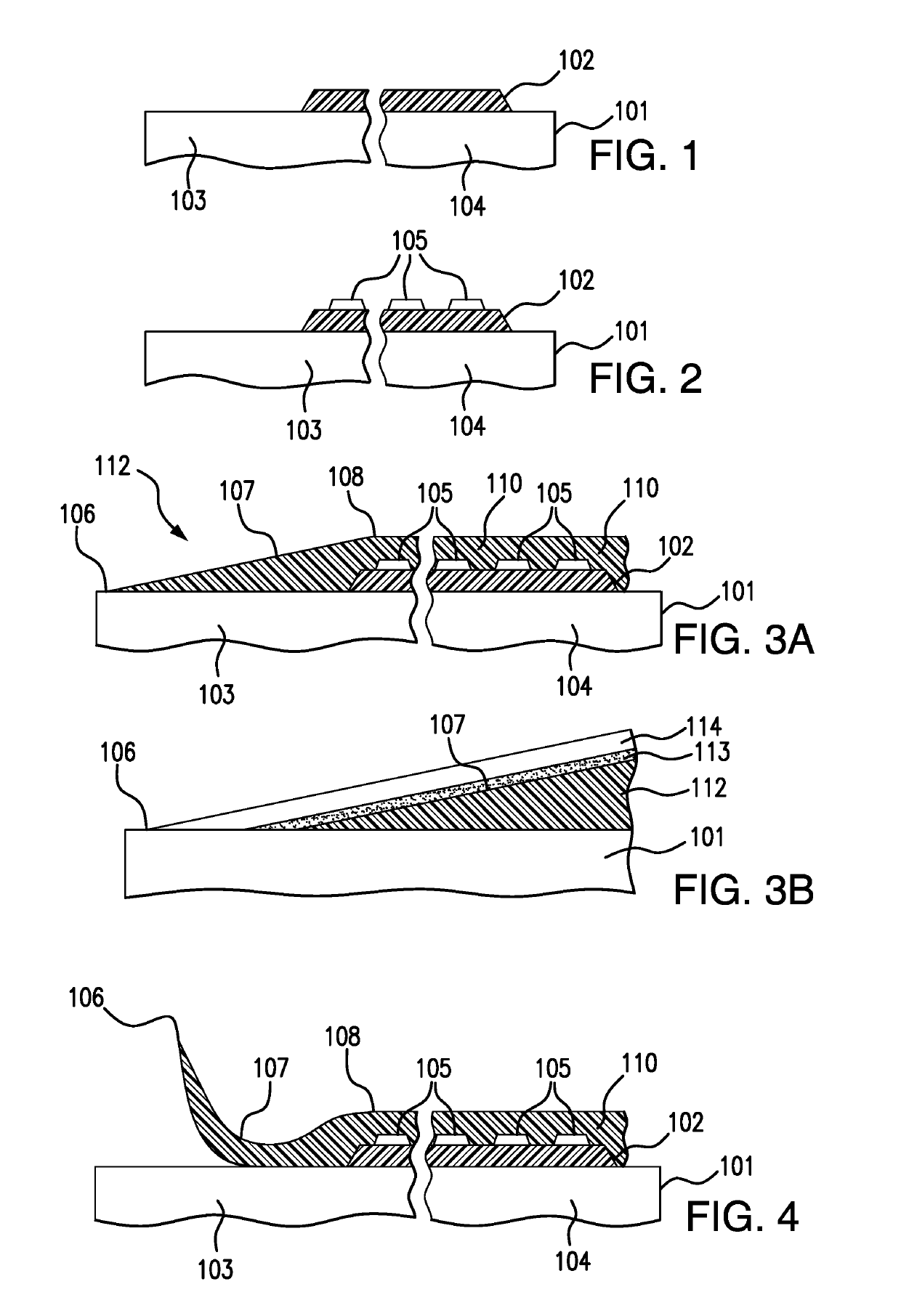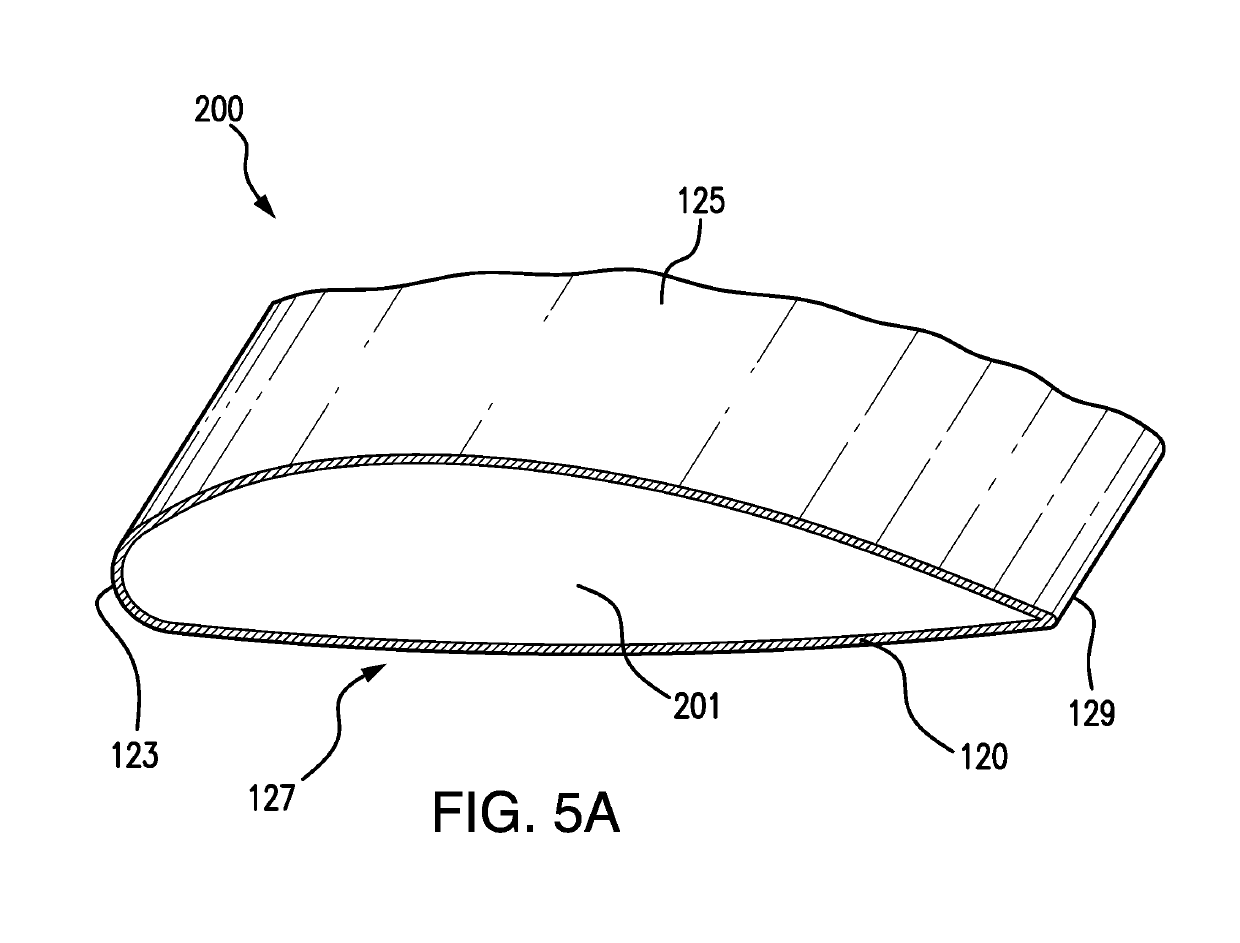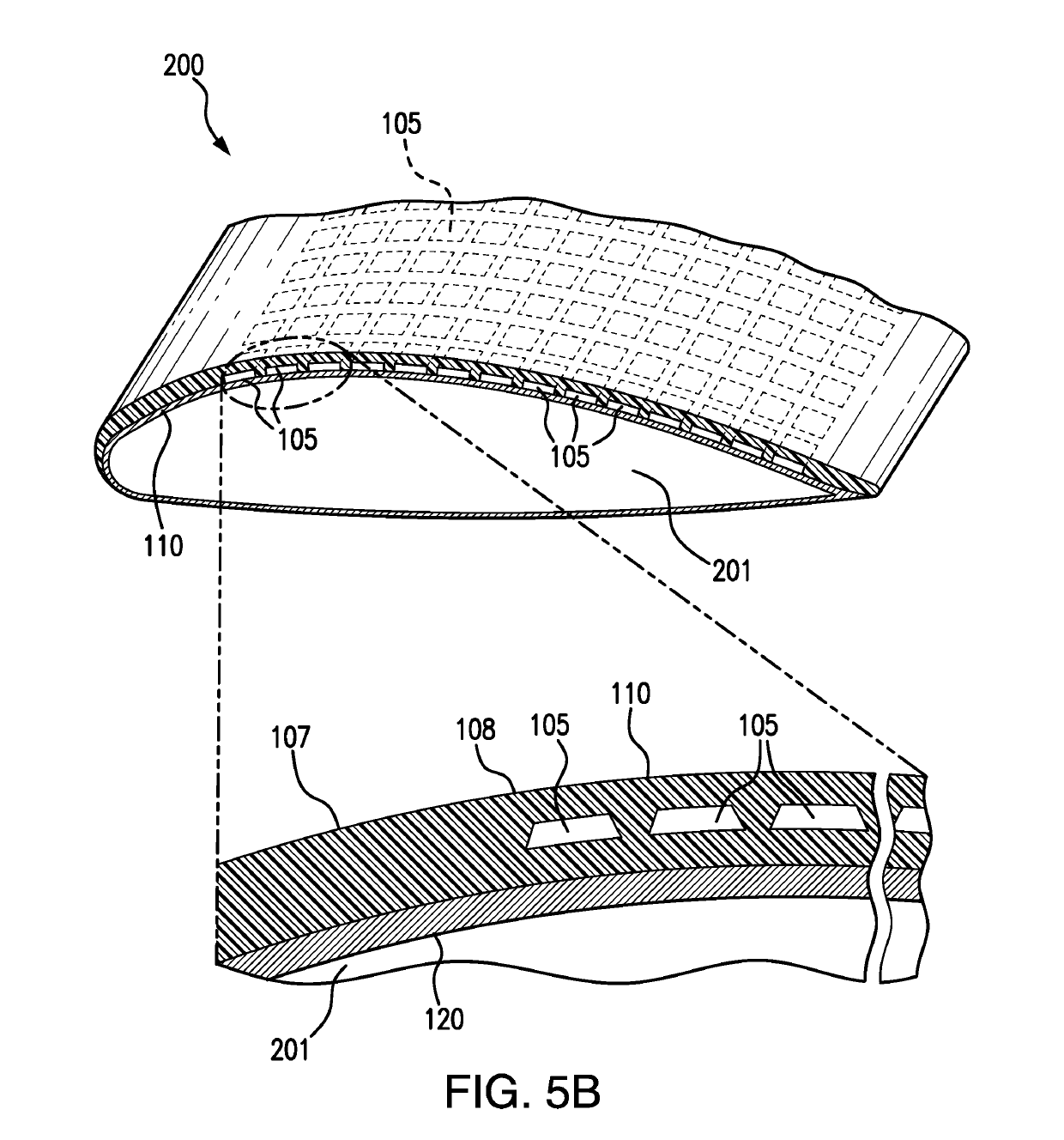Laminar airfoil and the assembly and mounting of solar cell arrays on such airfoils
a solar array and airfoil technology, applied in the field of solar cells, can solve the problems of increasing the complexity of manufacturing, reducing the performance of the aircraft, and impracticality of placement, and achieves the effects of less drag or resistance, convenient assembly, and less drag or resistan
- Summary
- Abstract
- Description
- Claims
- Application Information
AI Technical Summary
Benefits of technology
Problems solved by technology
Method used
Image
Examples
Embodiment Construction
[0053]Details of the present invention will now be described including exemplary aspects and embodiments thereof. Referring to the drawings and the following description, like reference numbers are used to identify like or functionally similar elements, and are intended to illustrate major features of exemplary embodiments in a highly simplified diagrammatic manner. Moreover, the drawings are not intended to depict every feature of the actual embodiment nor the relative dimensions of the depicted elements, and are not drawn to scale.
[0054]FIG. 1 is a cross-sectional view of a generally planar fixture 101 for assembling the airfoil layer with a solar cell assembly according to the present disclosure after the first process step of depositing a first silicone supporting film 102 on a first portion 104 of the fixture.
[0055]FIG. 2 is a cross-sectional view of the fixture of FIG. 1 after the next process step of attaching the solar cell assembly including a plurality of interconnected so...
PUM
 Login to View More
Login to View More Abstract
Description
Claims
Application Information
 Login to View More
Login to View More - R&D
- Intellectual Property
- Life Sciences
- Materials
- Tech Scout
- Unparalleled Data Quality
- Higher Quality Content
- 60% Fewer Hallucinations
Browse by: Latest US Patents, China's latest patents, Technical Efficacy Thesaurus, Application Domain, Technology Topic, Popular Technical Reports.
© 2025 PatSnap. All rights reserved.Legal|Privacy policy|Modern Slavery Act Transparency Statement|Sitemap|About US| Contact US: help@patsnap.com



